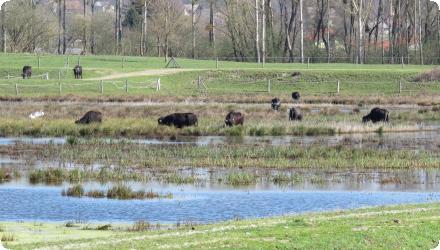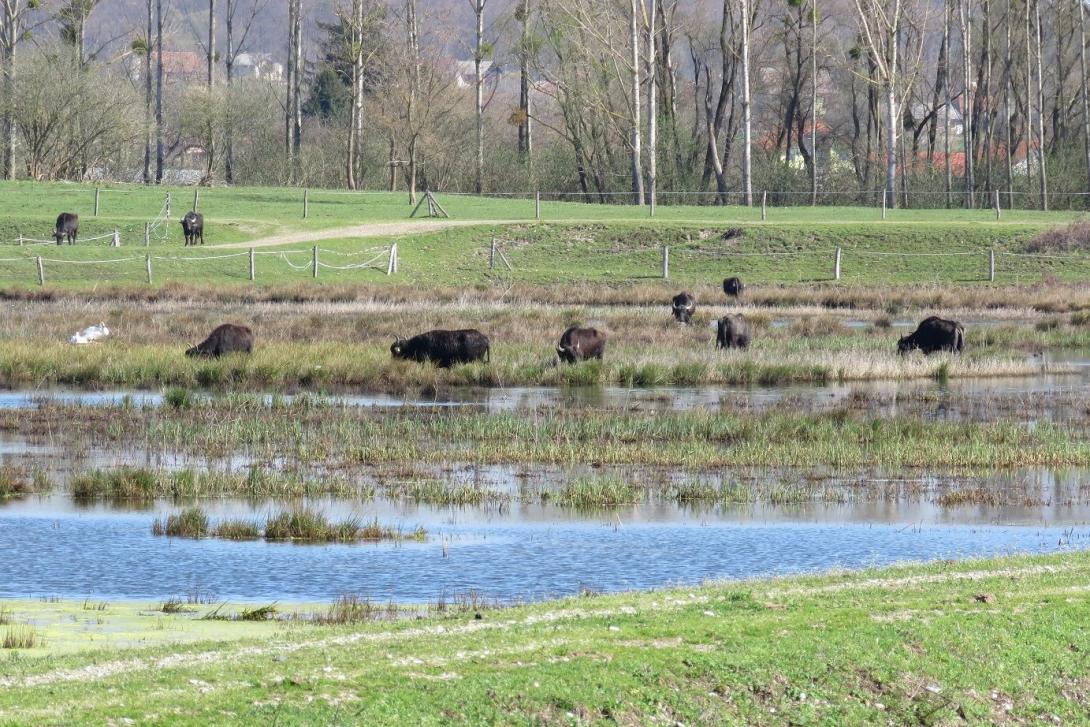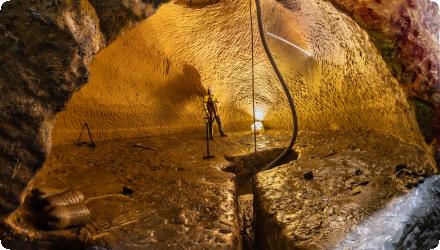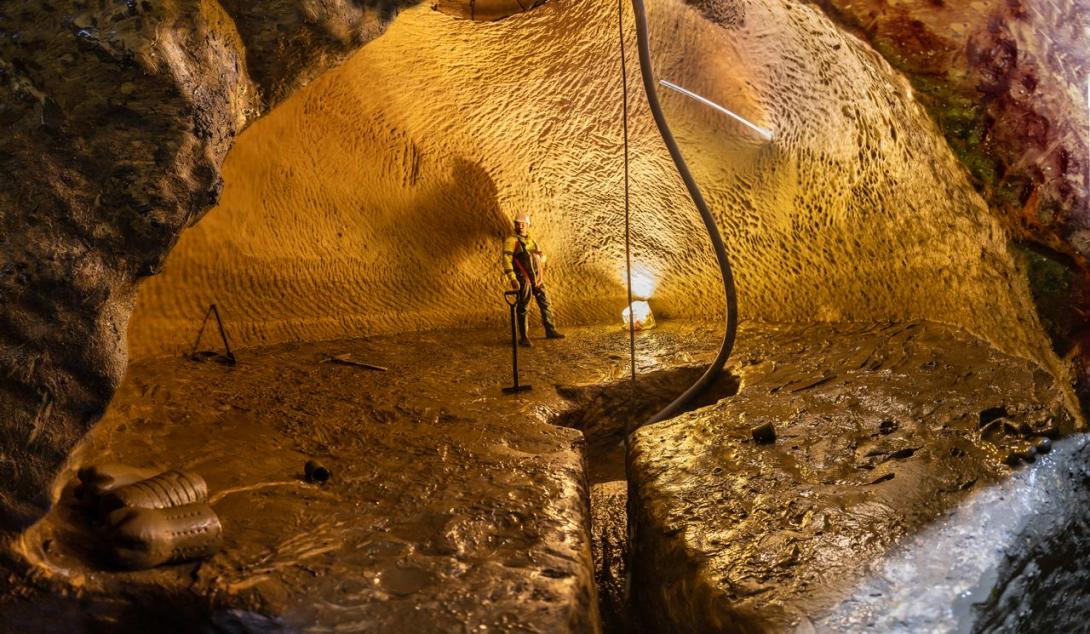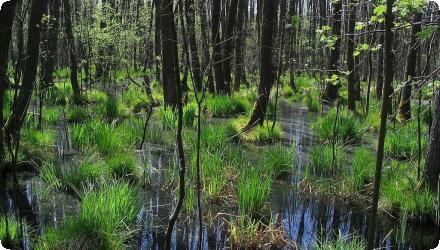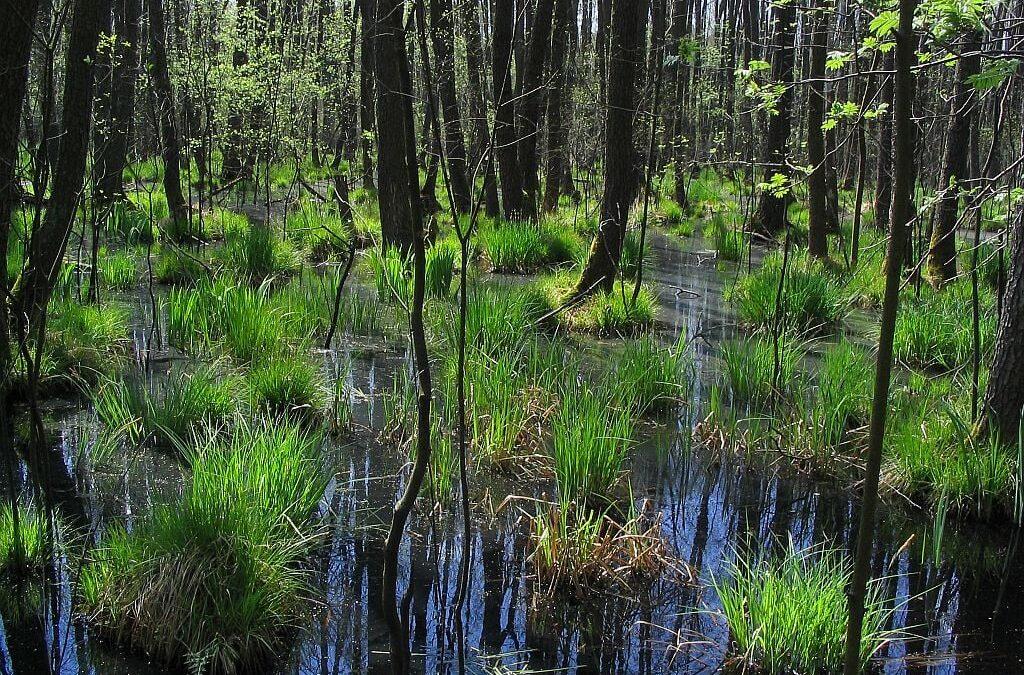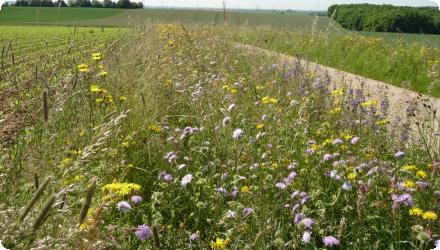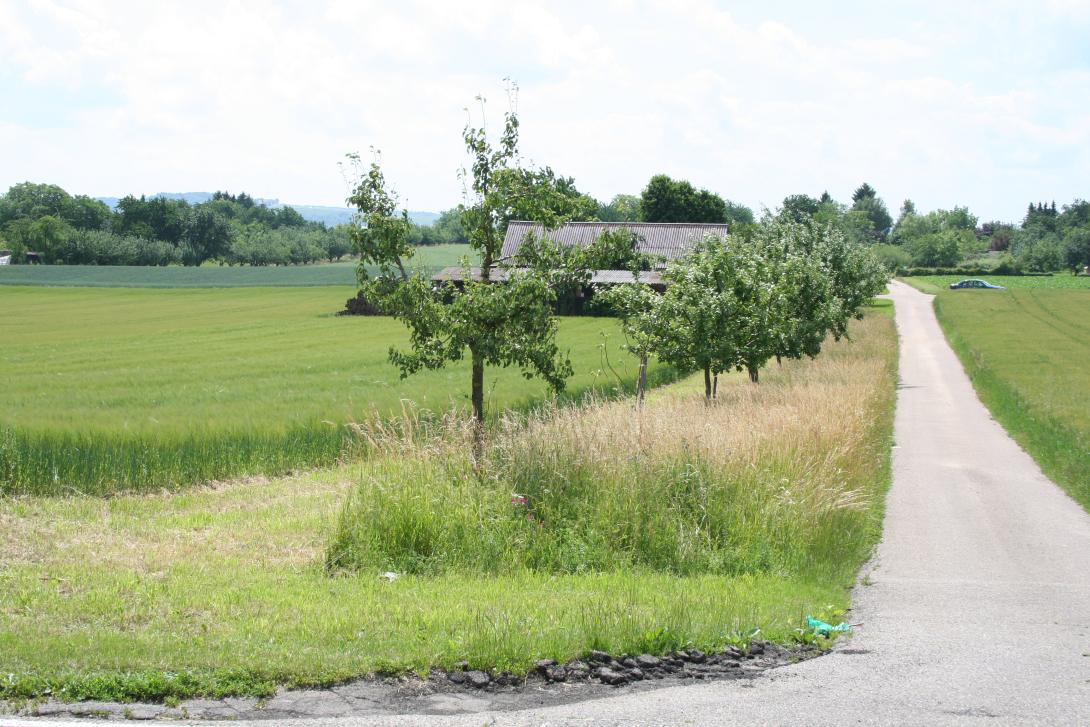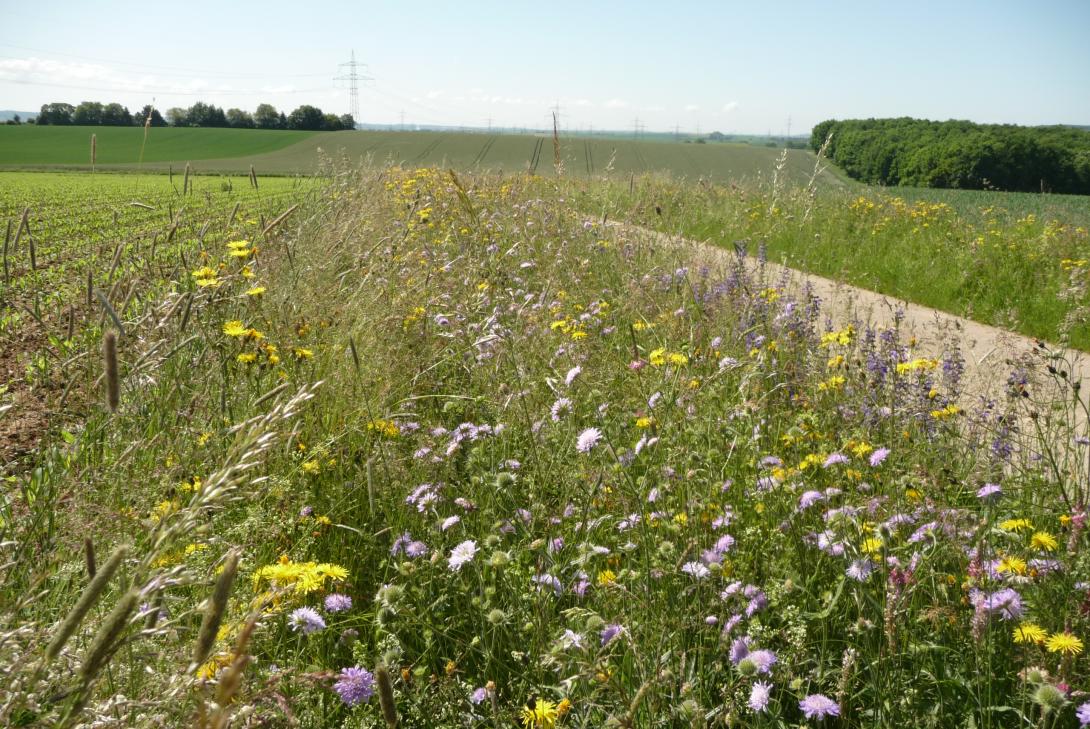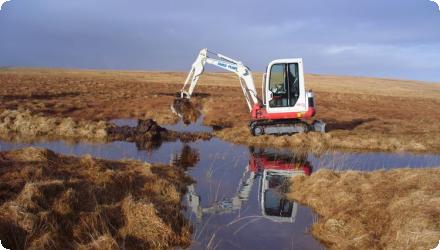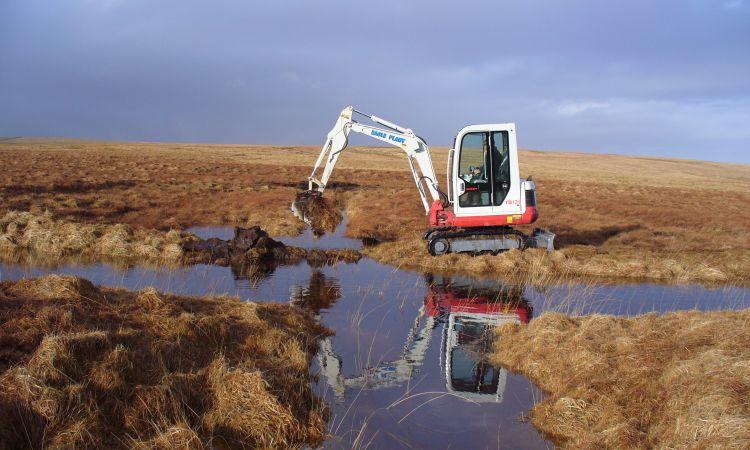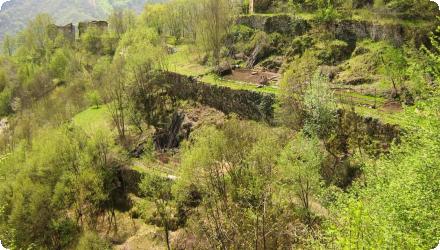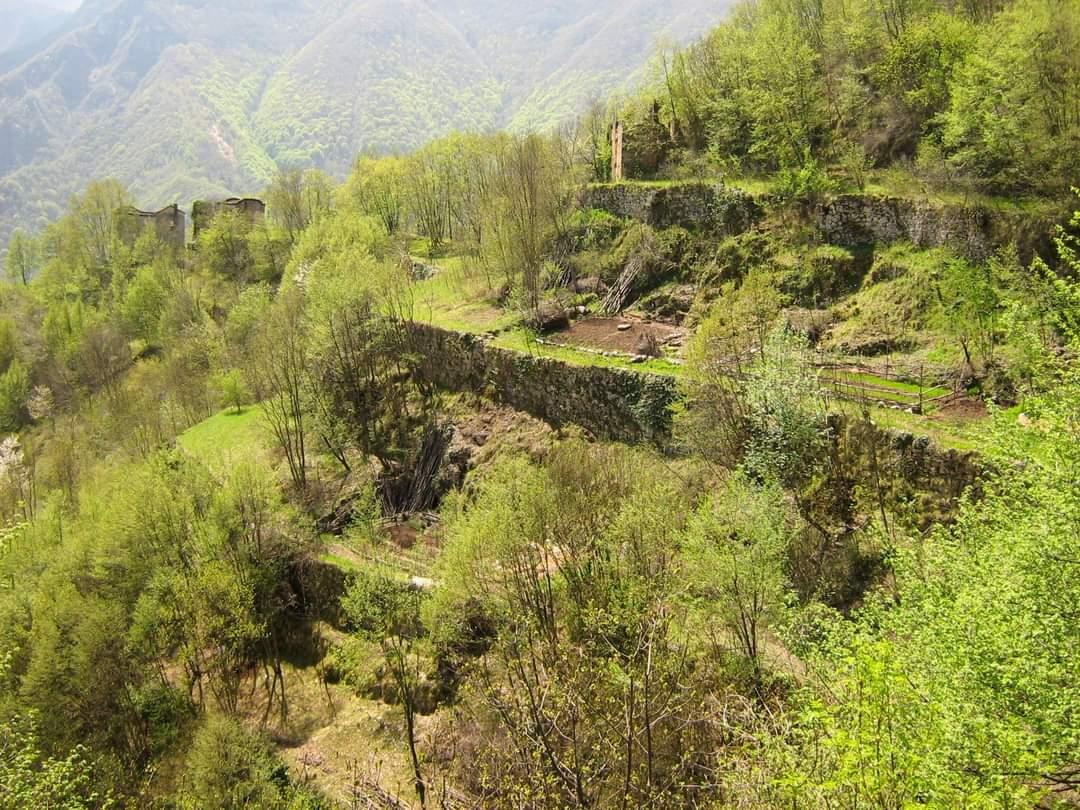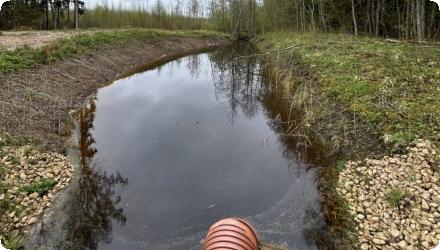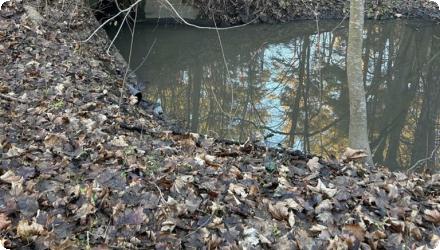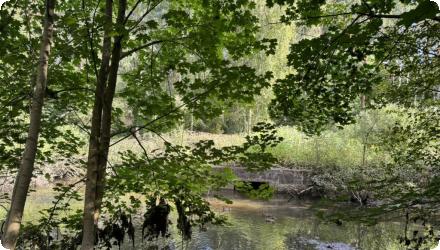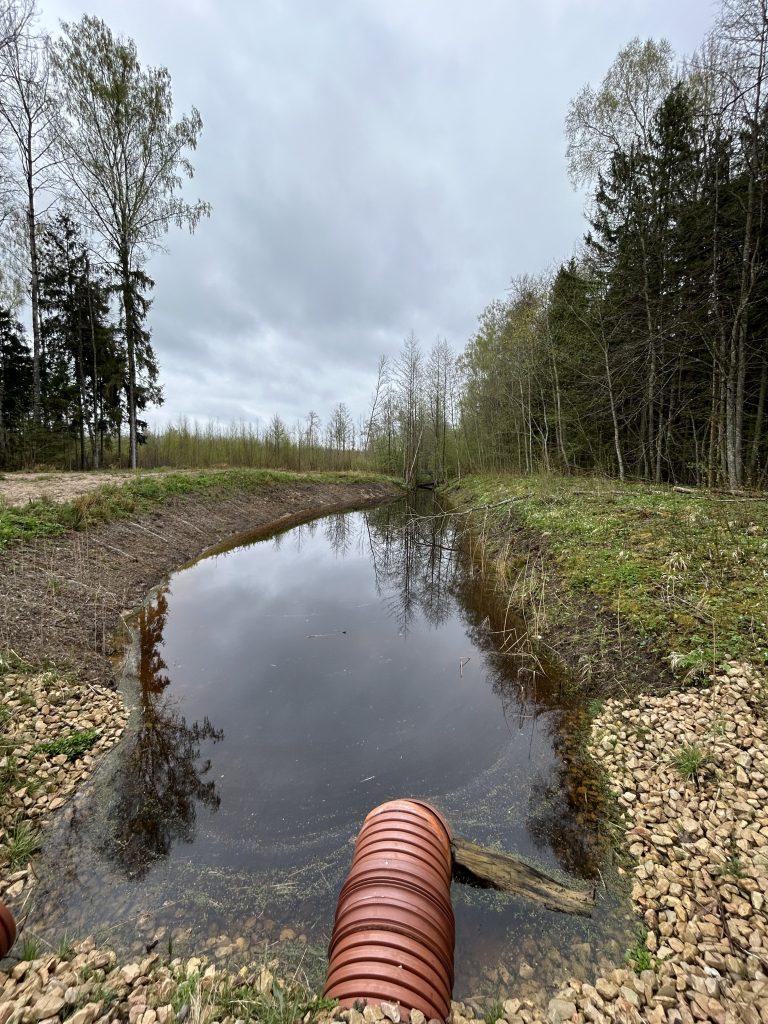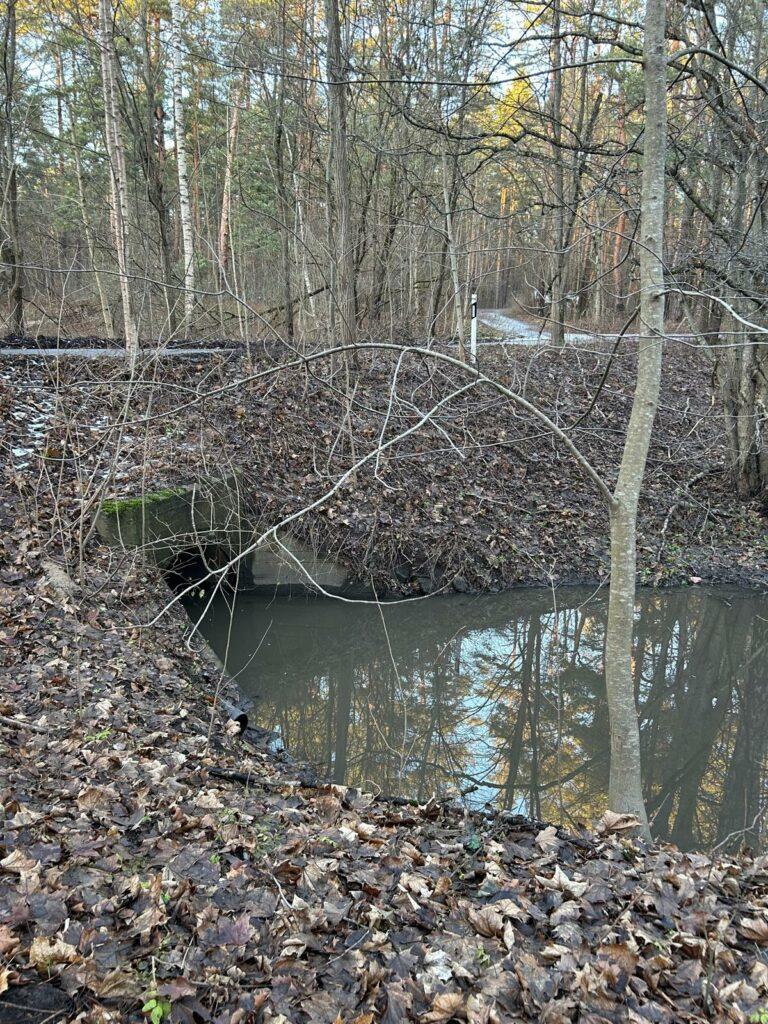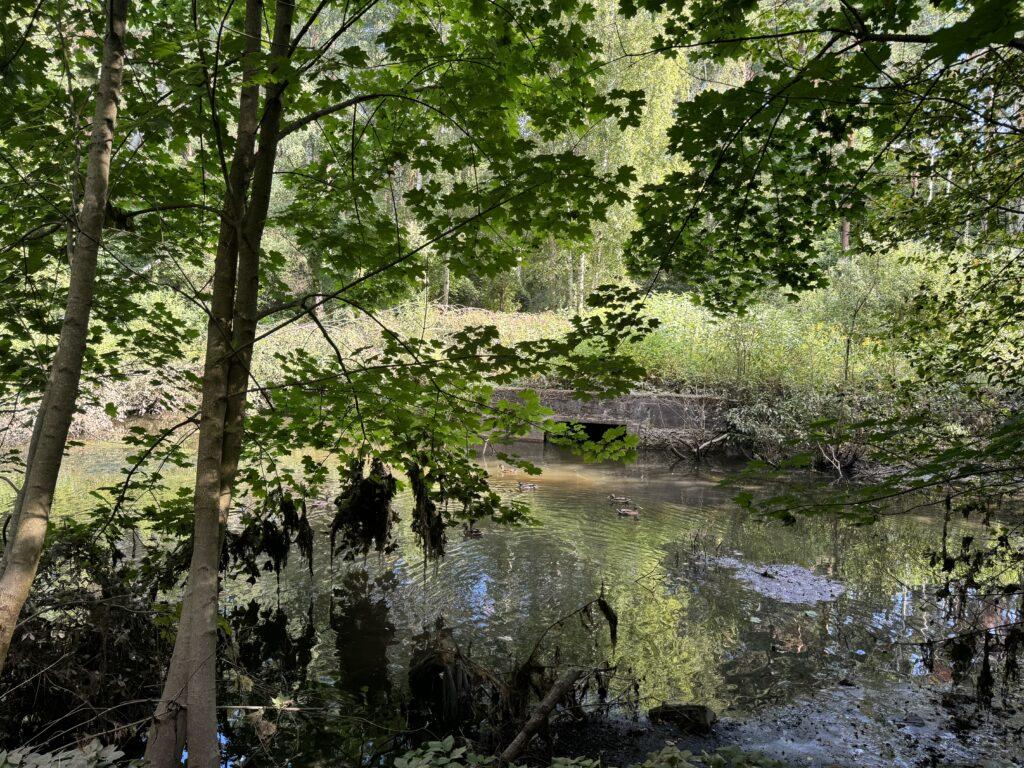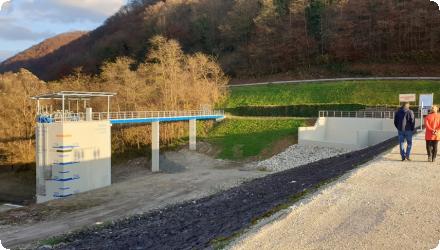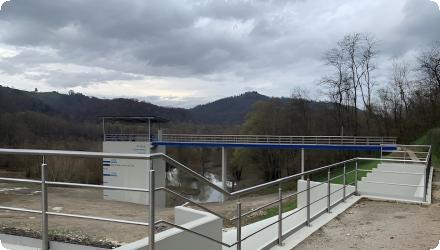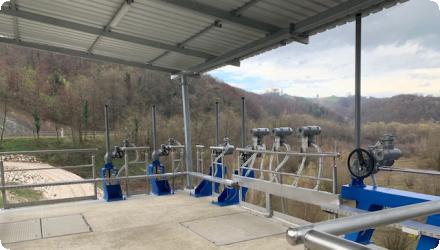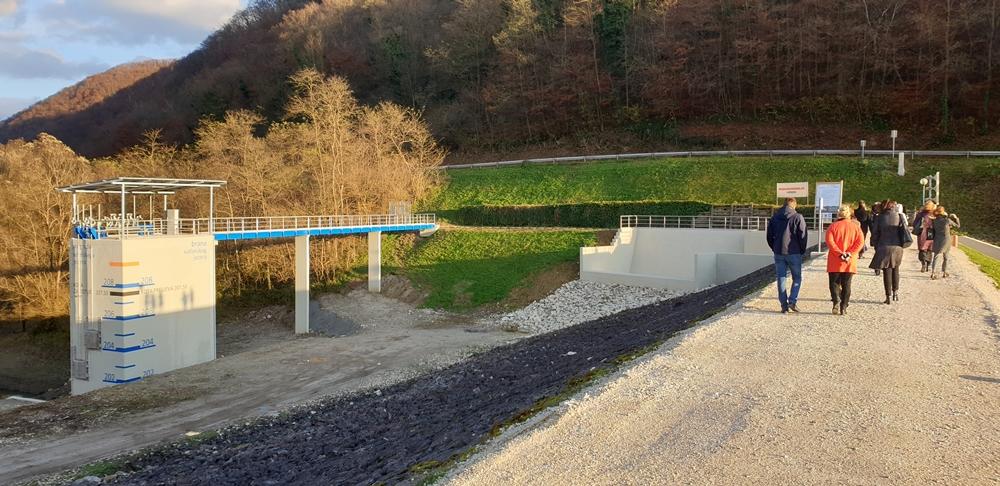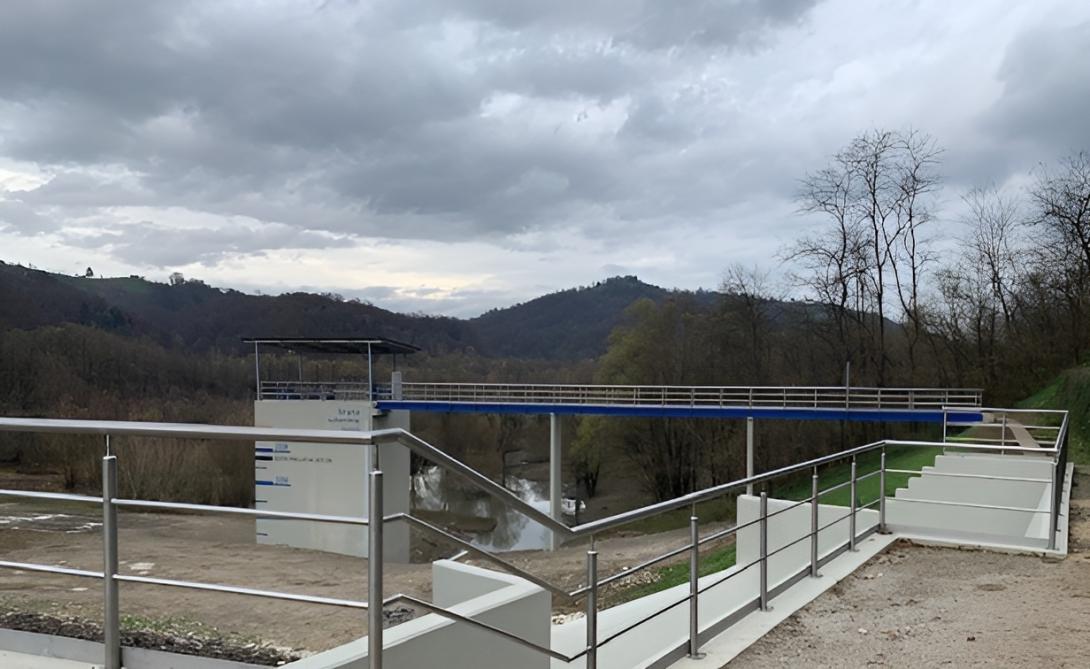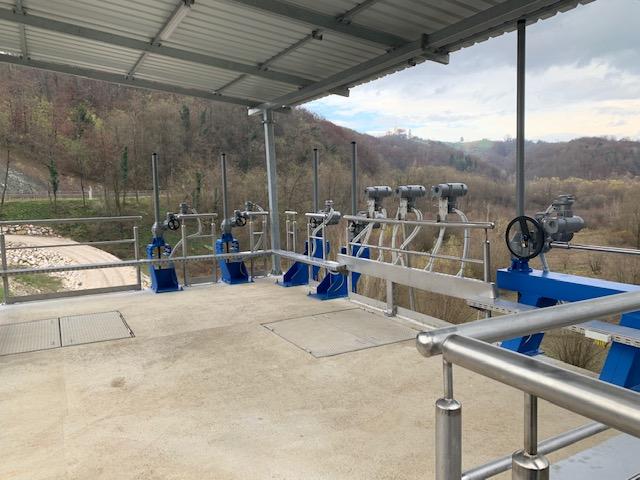Photo gallery
Summary
The LIVEDRAVA project, funded by the LIFE programme, transformed 61 ha of former wastewater basins at the Ormož sugar factory into semi-natural wetlands on the Drava River in eastern Slovenia. Since 2017 the site has been legally designated as the Ormož Lagoons Nature Reserve (≈66 ha) and is managed by DOPPS–BirdLife Slovenia under an operational management plan. Management focuses on dynamic water-level control and conservation grazing with water buffalo to maintain open reedbeds and wet meadows. Visitor facilities now include several bird hides built from shipping containers and an educational trail; in 2023 an interpretation centre within the regional “Drava Natura 2000” initiative opened in Ormož. Post-LIFE actions have consolidated the site, including the purchase of adjacent land (1.09 ha) and restoration of additional species-rich grasslands in 2022–2023. The reserve lies within the Mura-Drava-Danube UNESCO Biosphere Reserve and has become an important hub for migratory and breeding wetland species.
Last update
2025
